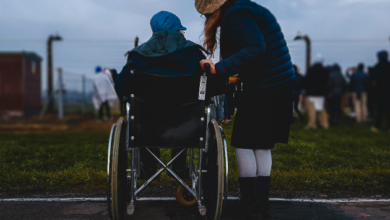Final Mile Delivery: What It Is and Why It Matters
In today’s digital age, convenience and speed are critical in determining customer satisfaction. As online shopping continues to grow, so does the importance of efficient delivery services. One crucial component of this system is final mile delivery, which represents the last step of the journey from a distribution hub to the customer’s doorstep. Despite its significance, final mile delivery can be the most challenging and costly part of the logistics process. In this blog, we’ll explore what final mile delivery entails, why it matters, the common challenges involved, and solutions to improve this essential service.
What is Final Mile Delivery?
Final mile delivery, sometimes referred to as “last mile delivery,” is the process of transporting goods from a warehouse or distribution center to the end user. While the term may imply a short distance, the “final mile” can vary widely depending on location and logistics needs, ranging from a few blocks in a city to rural routes over long distances. Regardless of distance, final mile delivery is all about ensuring goods reach the customer as quickly and accurately as possible.
Why Final Mile Delivery is Crucial for Businesses
- Customer Satisfaction: Final mile delivery is often the only direct interaction a customer has with a brand during the purchasing process. Ensuring this step is seamless and reliable is crucial for positive customer experience and retention.
- Competitive Advantage: As expectations for delivery speed and convenience rise, companies that excel in final mile delivery often stand out. Offering services like same-day or next-day delivery can make businesses more competitive.
- Brand Reputation: Efficient final mile delivery not only satisfies customers but also strengthens a brand’s reputation. Late or inaccurate deliveries can lead to negative reviews, while timely deliveries enhance brand loyalty.
Challenges in Final Mile Delivery
The final mile delivery process poses unique challenges that differ from those encountered in previous stages of the supply chain. Here are some of the main obstacles:
- High Costs: Last-mile delivery is typically the most expensive part of the delivery chain, sometimes accounting for over 50% of the total shipping cost. Factors like fuel, labor, and the cost of vehicles contribute to this.
- Traffic and Routing Issues: In urban areas, traffic congestion and complex routing can lead to delays, while rural routes may require additional resources to cover longer distances.
- Failed Deliveries: Missed deliveries or failed attempts due to customer unavailability can lead to increased costs and inefficiencies. Each failed attempt not only incurs additional costs but also impacts customer satisfaction.
- Environmental Impact: The surge in final mile deliveries has led to an increase in greenhouse gas emissions, particularly in congested cities. Reducing the carbon footprint of last-mile deliveries is now a growing concern for both companies and customers.
Solutions and Strategies for Optimizing Final Mile Delivery
To overcome these challenges, companies have started to adopt innovative strategies and technologies aimed at making final mile delivery more efficient, sustainable, and customer-friendly:
- Route Optimization Technology: By using advanced route optimization software, companies can create more efficient delivery paths, reducing fuel consumption and delivery times. GPS and AI-powered tools also allow real-time adjustments for traffic and other obstacles.
- Crowdsourced Delivery: Some companies leverage crowdsourced delivery models, similar to ridesharing, to expand delivery capabilities. This model allows businesses to use local resources, providing flexibility and cost efficiency.
- Local Fulfillment Centers: Establishing micro-fulfillment centers or local warehouses can help reduce the distance between the product and the end customer. This approach enables faster delivery times and reduces transportation costs.
- Parcel Lockers and Delivery Drones: New innovations like parcel lockers and drones offer potential for contactless and efficient final mile delivery. Lockers can be placed in strategic locations for easy pickup, and drones can bypass road traffic entirely for certain delivery types.
- Electric Vehicles and Green Initiatives: Adopting electric vehicles (EVs) and promoting eco-friendly practices help reduce the carbon footprint associated with last-mile deliveries. Many companies are now investing in EVs to align with customer values and environmental regulations.
Trends Shaping the Future of Final Mile Delivery
As technology continues to evolve, the final mile delivery landscape is witnessing transformative trends that could further streamline the process and meet increasing demands:
- Same-Day and On-Demand Delivery: Consumers’ desire for faster delivery options has led to the rise of same-day and on-demand services. Companies are enhancing logistics networks to make this possible, especially in urban areas.
- Automation and Robotics: Automated warehousing, robotic sorting, and autonomous vehicles are gradually being introduced to make deliveries faster and more cost-effective. Robotics can assist with tasks like loading and unloading packages, increasing overall efficiency.
- Customer-Focused Delivery: Companies are providing customers with more control over their deliveries through flexible options, real-time tracking, and communication. Some brands even offer specific delivery windows to enhance convenience and reduce failed deliveries.
- Artificial Intelligence in Predictive Analytics: AI-powered predictive analytics help logistics teams anticipate demand, optimize inventory levels, and prevent bottlenecks. Predictive analytics can help companies plan better, reducing delays and optimizing resource allocation.
- Augmented Reality for Delivery Efficiency: Although still in its infancy, augmented reality (AR) has the potential to aid delivery personnel in finding specific locations, streamlining loading processes, and improving accuracy.
How Companies Can Improve Customer Experience in Final Mile Delivery
For companies aiming to enhance customer experience, several best practices can be implemented in the final mile delivery phase:
- Transparent Communication: Providing customers with timely updates and real-time tracking on their delivery status is essential. A proactive approach to informing customers about delays or changes can build trust.
- Flexible Delivery Options: Offering flexibility, such as weekend or evening delivery slots, allows customers to choose a time that works best for them, reducing missed deliveries.
- Eco-Friendly Options: Many consumers today appreciate sustainable delivery options. Companies that offer eco-friendly choices, like carbon offset programs or low-emission delivery vehicles, often see higher satisfaction rates.
- Clear Return Policies: Hassle-free return policies and easy access to returns support ensure a smooth post-purchase experience, which is a significant part of the final mile delivery process.
The Importance of Choosing the Right Final Mile Delivery Partner
For businesses, partnering with the right final mile delivery provider is essential. An efficient and reliable partner can help optimize costs, improve delivery speed, and ensure customer satisfaction. Companies should seek out partners who have advanced technology, a solid reputation, and a flexible delivery network to match their unique needs.
Final Thoughts
Final mile delivery is a vital link in the e-commerce and logistics chain. As customer expectations grow, companies that invest in efficient final mile delivery solutions are more likely to build customer loyalty and enhance brand reputation. From optimizing routes to using innovative technologies like drones and AI, the future of last mile delivery is focused on speed, sustainability, and customer satisfaction. Businesses that understand and address the complexities of final mile delivery will have a competitive edge in the modern market, meeting customer demands for faster, more reliable, and environmentally conscious delivery options.



